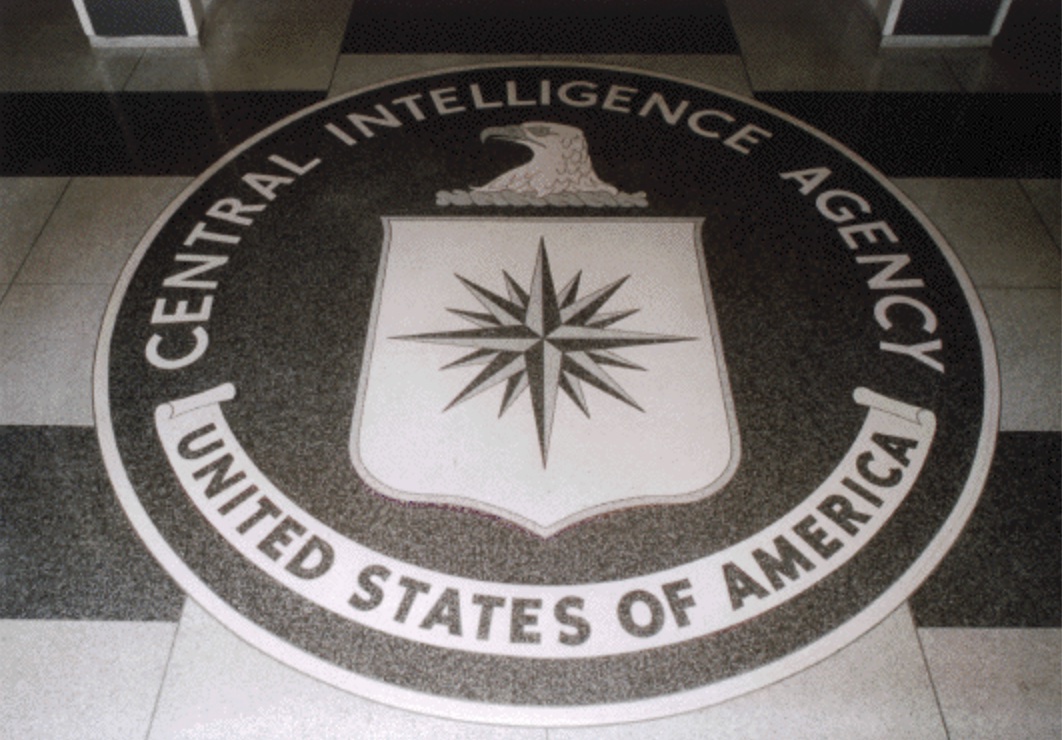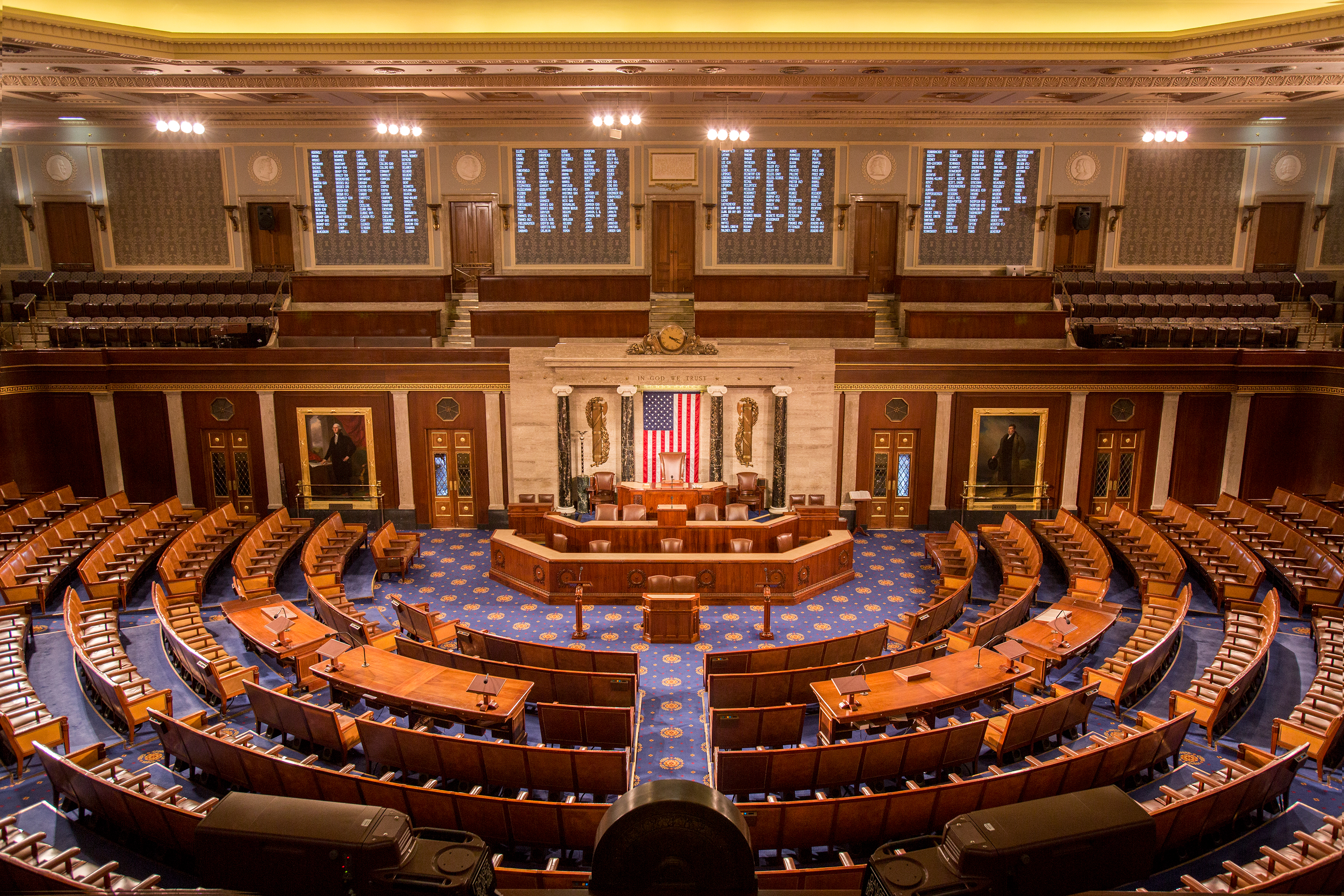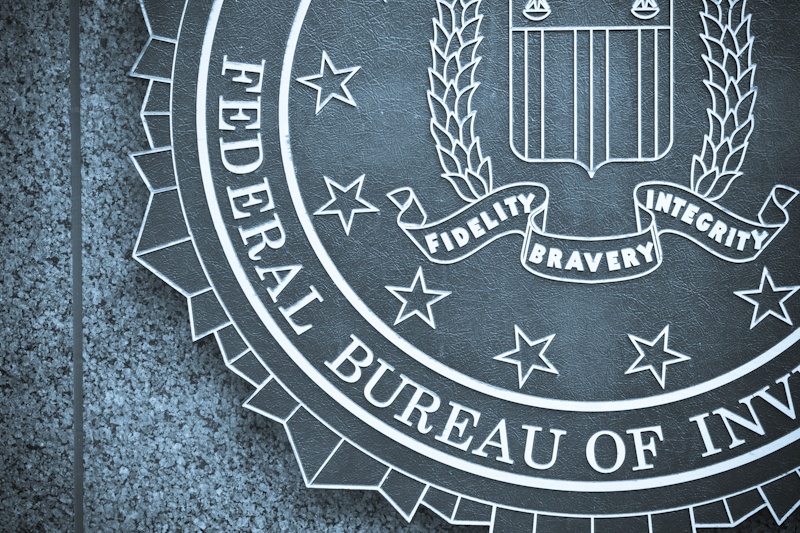Female Intelligence
A review of Liza Mundy, “The Sisterhood: The Secret History of Women of the CIA” (Crown, 2023)

Published by The Lawfare Institute
in Cooperation With

Women have always been linked with the world’s oldest profession, but they have also long influenced the second oldest. One of the earliest known female spies in the Western world was the English author Aphra Behn (the first former spy to be buried in Westminster Abbey), who was dispatched to Antwerp by Charles II in 1066 to convince a Dutch spy to become a double agent for the British monarchy. Elizabeth Van Lew built an impressive spy network for the Union during the Civil War, using a Black female slave to infiltrate the household of Confederate President Jefferson Davis in Richmond. Harriet Tubman famously ran an extraordinarily successful exfiltration operation, evacuating slaves from the South through the Underground Railroad network.
In the 20th century, Josephine Baker smuggled secret messages, written in invisible ink on sheet music, out of Paris to help the Allied cause in North Africa during World War II. Many British women served in the Special Operations Executive (SOE), handling agents, running safe houses, and parachuting into occupied France. At least 12 female SOE agents died in concentration camps. The American Virginia Hall, posing as a journalist in occupied France, built a network of agents, was pursued by the Gestapo, and escaped by hiking across the Pyrenees, despite having one wooden leg after a prewar hunting accident. In the Office of Strategic Services (OSS)—the predecessor to the CIA—the anthropologist Cora Du Bois mapped the geography and fortifications along the shorelines of potential amphibious landings in the South Pacific, using her area knowledge and her ability to extract information from missionaries and sailors. (Many other examples of women’s contributions to the OSS are recounted in Elizabeth McIntosh’s classic work, “The Sisterhood of Spies.”)
That women have always contributed to spycraft, however, does not mean that women have always been recognized or rewarded for their accomplishments. As journalist and historian Liza Mundy writes in “The Sisterhood: The Secret History of the Women of the CIA,” women in the CIA were long relied upon to get things done, but not rewarded for doing them. Their history is “secret” largely because women’s contributions have gone unacknowledged and undervalued for so long.
Mundy’s entertaining and enlightening book sets out to tell their story and, in so doing, to remedy that lack of recognition. She chronicles three generations of women at the CIA—from the early pioneers in clandestine operations in the 1960s and 1970s, to the “ladies doing analysis” in the 1980s and 1990s, to the new generation of women fighting the war on terrorism. The through line in their stories is the depressingly persistent discrimination, casual sexism, routine refusal to take their work and contributions seriously, and at times jaw-dropping misogyny. Being called “Sugar Tits” by a colleague (and this was 10 years ago, not 50), being told by the boss to “go shake your butt” to get another office to sign off on a memo, and being on the receiving end of an irate boss throwing a stapler were standard fare. Sexism is not unique to the CIA of course. But to paraphrase Captain Renault in “Casablanca,” it appears that “men in the CIA are like men everywhere, only more so.”
But Mundy aims to make a much more profound and important point than simply drawing attention to discrimination. By shunting women aside—channeling them into clerical and menial jobs, underestimating their value, and failing to take their views as seriously as they would a man’s—the intelligence community hindered its own mission. It is not just a question of who gets credit, but of who gets listened to. To state the obvious, failing to value the abilities of half of the population damages national security.
The CIA’s counterterrorism efforts illustrate the danger of sexist assumptions and the consequent view that certain voices “don’t count.” Mundy argues that discounting these voices contributed to the inadequate response to al-Qaeda before 9/11. At the same time, however, Mundy describes how that very failure—steering women into low-status support roles—carried the seeds of success that helped transform the culture of the CIA and, in so doing, make it better.
It was a small group of women, in a windowless vault in CIA headquarters, who first started to notice and track the group of jihadis who would form al-Qaeda. The women were there because women had historically been steered into the kinds of painstaking but unglamorous jobs that involved data collection and organization. Dismissively referred to as “vault women” or “sneaker ladies,” these women organized and analyzed vast quantities of data, keeping track of biographical information about foreign scientists, politicians, military commanders, and agents. They analyzed operations, using data to test whether sources were good, whether they were being turned into double agents, and whether they were being handled properly. They collected data to know what information about an operation that other officers working another operation might need to know. The work required patience and attention to detail, and it did not lend itself to professional glory. This “targeting” skill set was, however, uniquely well-suited to the challenge presented by counterterrorism intelligence.
When al-Qaeda was coming on the scene, therefore, the analytical unit best in a position to track, understand, and target it was made up largely of women. Yet when these women started to warn of the rising danger in the late 1990s, their voices could not gain traction. Analytical reports detailing the structure, personnel, and money flows of al-Qaeda went nowhere. Despite being snubbed, the analysts kept working. As Mundy describes, their analysis indicated that al-Qaeda planned to bomb the USS The Sullivans, a naval destroyer named after the five brothers who died when their ship was sunk in the Battle of Guadalcanal in World War II. The al-Qaeda attack was planned for Jan. 3, 2000, when the ship was moored in the port of Aden, in Yemen. When Jan. 3 came and went with no attack, the women were “laughed at” and “ridiculed by our own colleagues.” It was years later—after 9/11—that it became known that the analysts had gotten it right. Al-Qaeda had in fact planned an attack on The Sullivans, but the suicide bombers failed to get the shaped charge properly fitted into the hull of their attack boat. The malfunction sank their own ship before it could reach the destroyer. But the women on the counterterrorism team found their reputation further damaged, and it was harder than ever to be taken seriously.
With the attacks of 9/11, however, counterterrorism suddenly shed its status as a professional backwater. As Mundy relates, “obscure jobs became high-profile ones.” Hunting terrorists requires different skills than recruiting human sources. And, critically, after 9/11 hunting terrorists became as high profile and important as recruiting human sources. Women had these terrorist-hunting skills, after years of toiling as “vault women” and being steered into similar jobs like “targeting.” In the post-9/11 crisis atmosphere, CIA leadership had no choice but to rely on this expertise. And with that, women became a more visibly important presence at the CIA.
This cultural shift was profound. While it is impossible (and usually unhelpful) to ponder counterfactual questions, Mundy notes that Susan Gordon, a career CIA official who rose to be the second-most senior official in the Office of the Director of National Intelligence, went so far as to suggest that the world would have looked very different if women had not played a lead role after the attacks. Given the striking gender makeup of the team tracking bin Laden, “‘If 9/11 and the hunt for UBL had happened, say, early in my days when [the targeting] discipline hadn’t really issued forth, when you didn’t have as many women,’ it’s not clear that the hunt for Osama bin Laden would have succeeded, nor the wider war on terrorism.”
That is not to say women are better; it is simply that bringing a different perspective can sometimes be game changing. In studying the Abbottabad compound during the hunt for Osama bin Laden, aerial surveillance showed laundry drying on the line. The women accurately deduced the number of adults and children living in the compound based on the laundry. As Mundy points out, it is not that men could not have made the same deduction. Women simply brought something different to the table.
The growing role of women at the CIA can also be traced to another factor—the sacrifices and support of the women who paved the way as pioneers in the early days of the agency: the foundational members of the sisterhood.
In the 1960s and 1970s, CIA clandestine operations overseas was the province of men. Yet, against the odds, a few women made their way in. Graduating from Brown University in 1966, Lisa Manfull should have been a “shoo-in” to become a CIA case officer. The daughter of a diplomat, she had lived in Paris, Mexico, and Vietnam, spoke French and Spanish, and had the ability to function anywhere in the world. Manfull wanted to be a spy overseas, and although she was admitted into the operations training program, she was steered into support roles and not allowed to complete the full training course to be “certified” as a case officer.
It took her 10 years to get another crack at becoming a case officer: She reapplied to the training program and finished first. By now married, she and her case office husband were posted overseas, where Lisa Manfull Harper was a “rock star.” It took almost another 10 years before she finally got a top job as chief of station in a troubled Central American country. A plum position to be sure, but a “hornet’s nest” job that no one else wanted and one at which everyone expected her to fail. Fail she did not, and she was rewarded with the ultimate plum—chief of the Latin American Division. But the system rebelled against the intrusion of a woman into the all-male bastion of division chief. She was frozen out and ignored. According to Michael Sulich, who would later become head of the clandestine service, she was “treated like garbage.” Exhausted, now divorced, and in ill health, Manfull Harper retired.
Fortunately, she was convinced to return to the agency a few years later, in the summer of 2000, to join the CIA’s counterterrorism team. She now added her operational chops to the sisterhood of analysts hunting bin Laden and al-Qaeda.
Heidi August also hoped to be a case officer, applying to the CIA in 1968. She was hired—as a clerk—and assigned to the map folding room. She was eventually sent to Libya—as a clerk—where she found herself serving in the middle of Muammar Qaddafi’s coup. Impressed by August’s skills, her boss asked her in 1974 to accompany him to Cambodia, where the tenuous situation was deteriorating. August was awarded a medal for her assistance with the subsequent emergency evacuation. Although still on a “non-professional track,” she was given a chance to attend training to become a “professional” case officer. She “aced” the training, and she too was eventually made a chief of station. She continued to excel, volunteered to serve in Iraq, and retired in December 2003 as a senior executive. It was a long way from the map folding room.
Although the analytical side of the CIA house was slightly more diverse than that of clandestine operations, it was still a very male-dominated domain in the 1980s. But women made more inroads there.
It was a trio of female intelligence analysts who were among the first people in Washington to study and develop a deep knowledge of al-Qaeda and Osama bin Laden. All three began their careers in professional backwaters, despite their “staggering array of credentials.” It took Barbara Sude, with a doctorate in Near Eastern studies from Princeton University, more than a decade of toiling away in an off-campus support unit before finally being able to secure a spot at headquarters as a CIA analyst.
Cynthia Storer, a half-generation younger than Sude, still found herself channeled into a low-level job as an imagery analyst at a dingy World War II-era building in the Washington Navy Yard when she joined CIA in the mid-1980s. After three years, she made it to CIA headquarters as an analyst, where she was assigned as a military analyst for Afghanistan, sharing an office space that her two colleagues had dubbed “the ghetto.”
Gina Bennett, who graduated in 1988 from the University of Virginia with a double major in economics and foreign policy and a minor in religion, applied to the CIA but could not get an interview. Instead, she applied to the State Department—where she was hired as a typist (after passing a typing test for which she was required to wear a skirt). After impressing George Shultz while typing his out-processing paperwork, she was promoted to the State Department’s intelligence analysis unit, where she published “the first prescient warning about Osama bin Laden” in 1993. She made it to the CIA, as a counterterrorism analyst, in 1997. These three women formed a working group in the early 1990s to study, analyze, and collaborate on their shared obsession: learning—and warning—about al-Qaeda and Osama bin Laden.
The trio soon got another team member, Jennifer Matthews. Matthews had also started her career in the backwaters of the CIA as an imagery analyst. She was building the counterterrorism team’s “targeting” efforts—at that time a new field that aimed to trace communications, money flows, travel patterns, and membership connections of terrorist organizations. The work “was fantastically hard” and required painstaking attention to detail, “slogging” through vast amounts of data, patiently sifting, organizing, and updating. It was classic “vault ladies” work, but it called for precisely the skills needed to crack the code of complex terrorist organizations like al-Qaeda. Matthews “devoted fifteen years of her life to tracking bin Laden—before 9/11 and after.” In 2010, she was serving as the CIA base chief in Khost, Afghanistan, providing targeting information for drone strikes in Pakistan, when she and six other CIA colleagues were killed by a suicide bomber.
But in the late 1990s, even after the Counterterrorism Center (CTC) had been created, the office was still viewed as a professional dead end and suffered from the same “sneaker-ladies” reputation as other female-dominated offices. The CTC had to beg for resources and was chronically understaffed. Whether it was because its staff were mostly women or for some other reason, the idea that al-Qaeda and Osama bin Laden posed “a new threat … was impossible for people to believe.”
The subsequent history—of warnings that went unheeded, the Africa embassy bombings, the attack on the USS Cole, 9/11, and the subsequent wars in Iraq and Afghanistan—has sadly become well known. The “what ifs” are many. But “The Sisterhood” makes a persuasive case that one among many of our failings before 9/11 was the intelligence community’s failure to heed the prescient warnings of these women. And they were ignored not because they were seen as wrong, but because leadership viewed them as just “a bunch of chicks.” (Recent reporting suggests Israel’s military may have been caught unprepared for Hamas’s Oct. 7 attack because of the similarly dismissive attitude of male commanders to the work of the largely female intelligence officers painstakingly monitoring data on Hamas activity in the weeks before the attack.)
Ironically, however, it was the expertise these women developed after being shunted aside that allowed them and the women who followed to flourish after their warnings proved warranted. Their talents for making sense of vast volumes of seemingly unrelated data had met the moment. The resulting cultural shift within the CIA that Susan Gordon described can be attributed to women like Cynthia Storer, Barbara Sude, Gina Bennett, and Jennifer Matthews, who dramatically demonstrated that the “chicks” were worth listening to.
They were followed by the current generation of amazingly talented and brave CIA officers, such as Molly Chambers. As a newly minted case officer stationed in Uganda, Chambers was tasked with helping find the “lost boys”—boys who had been kidnapped by the Lord’s Resistance Army (LRA) and trafficked as child sex-slaves or forced to serve as child soldiers in the LRA’s war against the Ugandan government. Chambers hatched a plan to try to convince the boys to return home, by convincing them they would be welcomed and not stigmatized as the “defectors” they were portrayed to be. She wrote a song with that message called “Come Home” and convinced Uganda’s leading rap star to record it. It became a runaway hit, and at least some boys returned home as a result. In her next posting, to Sudan, she helped secure the release of dozens of schoolgirls kidnapped by Boko Haram, by cultivating an asset who provided information to identify the mosque where the girls were being held.
In 2018, another barrier was broken when Gina Haspel became the first female director of the CIA. During this time, the CIA’s Directorate of Operations also had its first female chief.
And paving the way for all these women were the pioneers like Heidi August and Lisa Manfull Harper, who blazed the early trail. Together, they formed a sisterhood that was “a chain of solidarity and achievement both known and unsung.”



